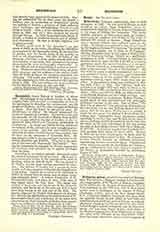

Erdington Abbey, situated in a suburb of Birmingham, Warwickshire, England, belongs to the Benedictine congregation of St. Martin of Beuron, Germany, and is dedicated to St. Thomas of Canterbury. Driven from Germany by the Falk laws, four of these exiled monks went to Erdington at the request of Bishop Ullathorne, O.S.B., and of the Rev. Daniel Haigh, M.A., a convert Anglican clergyman who gave them the splendid Gothic church which he had built and embellished out of his own private fortune, as a thank-offering to Almighty God for the gift of the true Faith. Father Haigh’s modest presbytery was the first monastery, and here Dom Placid Walter, Arch–Abbot of the Beuron Congregation, Dom Hildebrand de Hemptine, later Abbot Primate of the Benedictine Order, Dorn Leo Linse, afterwards Abbot of Fort Augustus in Scotland, Dom Leodgar Stocker, and a lay brother took up their abode in October, 1876. Dom Placid was the first prior. Two years later, Dom Hildebrand succeeded Dom Placid, and at once set about building a monastery that would accommodate a community large enough to chant the Divine Office in choir. It was finished in 1880, when the number of monks was increased to eleven with three lay brothers.
Meanwhile Father Haigh had found his last resting-place in the Blessed Sacrament chapel, so the untenanted presbytery was converted into a Catholic grammar school, the first of its kind in the neighborhood of Birmingham, with Dom Wilfrid Wallace, an English priest who had lately joined the community, as head master. Dom Leo Linse became prior in 1882, and was succeeded in 1886 by Dom Boniface Wolff, who was followed, in turn, by Dom Silvester Schlecht in 1895. On the feast of the Assumption, 1896, the priory was transformed into an abbey by a Brief of Leo XIII, though three years elapsed before it received an abbot. These were years of spiritual and material development. A novitiate was opened and a school for oblates, several members were added to the community, and a large addition made to the monastic buildings. These comprised the abbot’s apartments and chapel, rooms for guests, entrance hall, parlours, novitiate, and clericate. They were completed and blessed in 1898. In July, 1899, Dom Ansgar Hockelmann was appointed its first abbot, and he was blessed in the abbey church on September 3, by Bishop Ilsley of Birmingham. Since then a spacious refectory and library have been built, and the community continues to grow.
PETER NUGENT

